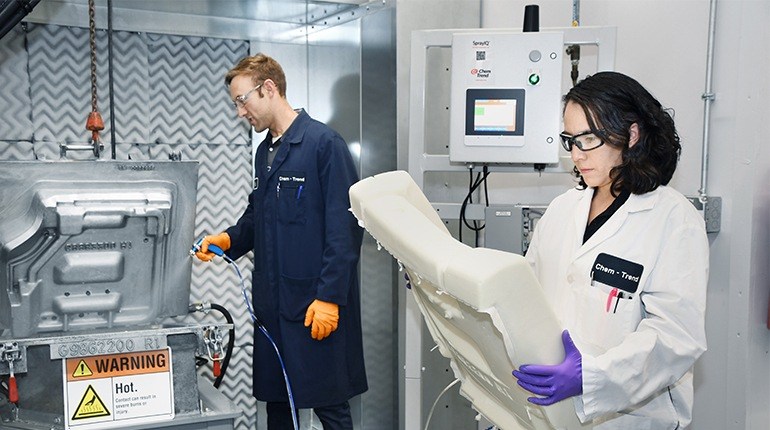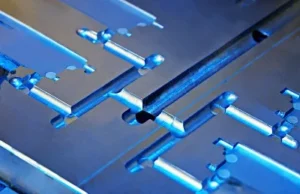Are you tired of struggling with stubborn molds and facing the financial burden of frequent tool replacements?
These ongoing challenges can be frustrating and costly, impeding you in mold production and manufacturing processes.
Introducing the answer you’ve been seeking – PU mold release agents and mold maintenance. This invaluable knowledge is crucial for anyone involved in the mold production industry.
This write-up will guide you through overcoming common obstacles and boosting your productivity. Whether you’re a seasoned professional or just starting, understanding the benefits of high-quality release agents and implementing proper mold maintenance techniques can lead to substantial savings.
So, let’s kick off without any ado.
Importance of Mold Maintenance
Mold maintenance is an indispensable facet of mold production, demanding unwavering attention. Consistent maintenance presents multiple advantages, directly influencing the overarching efficacy and success. Herein lie a few of these invaluable benefits:
Prolonging Mold Lifespan
Maximizing the longevity of your molds takes skillful maintenance that goes beyond ordinary care. The meticulous routine of cleaning, scrutinizing, and proactive measures acts as a formidable shield against decay, diminishing the urgency for premature mold replacements. It saves you valuable resources and ensures consistent performance over an extended period.
Minimizing Downtime and Production Delays
Unplanned downtime due to mold-related problems can be rather challenging for production facilities. Regular maintenance of molds detects and addresses potential issues before they become major disruptions. Unexpected breakdowns, repairs, and associated production delays can be minimized by keeping molds in optimal condition. It ensures smooth operations and maximizes productivity.
Enhancing Product Quality and Consistency
Clean and well-maintained molds reduce the risk of defects, such as surface imperfections, flash, or dimensional inconsistencies. With regular maintenance, you can ensure molds are free from contaminants and operate at their best, resulting in superior product quality and customer satisfaction.
Improving Efficiency and Productivity
A clean and properly lubricated mold facilitates the smooth release and ejection of molded parts, reducing the chance of sticking or sticking-related defects. It leads to faster cycle times, fewer production errors, and enhanced efficiency in your manufacturing processes. You can achieve higher output levels without compromising quality by optimizing mold performance.
Common Mold Maintenance Challenges
Even with regular maintenance, mold upkeep can present various challenges that should be addressed to ensure optimal performance and longevity.
Mold Degradation and Wear
Over time, molds can experience degradation and wear due to the constant stress of the molding process. High temperatures, pressure, and abrasive materials can lead to mold surface damage, erosion, or dimensional changes. Implementing preventive measures such as proper cooling, using wear-resistant materials, and monitoring mold conditions can help mitigate these issues.
Contamination and Build-up
Mold surfaces are susceptible to contamination and build-up, adversely affecting part quality and mold performance. Contaminants like residue, dirt, or leftover molding materials can accumulate, leading to surface defects and potential part sticking. Regular cleaning and purging techniques using PU mold release agents can prevent contamination and maintain clean mold surfaces.
Identifying and Addressing Mold Defects
Identifying and addressing mold defects is required to maintain the best mold performance. Defects can range from minor cosmetic imperfections to critical functional issues. Regular inspections, including visual checks, dimensional measurements, and non-destructive testing methods, help detect defects early on. Once identified, appropriate corrective actions such as mold repair, polishing, or replacement of damaged components can be undertaken.
Repairing and Refurbishing Techniques
Mold maintenance often involves repairing and refurbishing techniques to restore mold functionality and extend lifespan. Repair methods can include welding, grinding, or replacing damaged parts. Further, refurbishing techniques like surface coating, retexturing, or applying protective treatments can rejuvenate mold surfaces and enhance performance.
By recognizing and addressing these common challenges, mold maintenance efforts can overcome potential obstacles and ensure continuous effectiveness and longevity of your molds.
Essentials of Effective Mold Maintenance
Certain essential elements must be incorporated into your maintenance practices to ensure effective mold maintenance.
Cleaning and Inspection Procedures
Thorough cleaning is essential for maintaining mold performance. Develop a systematic cleaning procedure that removes residue, dirt, or debris from the mold surfaces. Use appropriate cleaning agents and techniques that do not damage the mold. Additionally, regular inspections should be conducted to identify any signs of wear, damage, or potential issues that may require attention.
Lubrication and Rust Prevention Techniques
Proper lubrication is vital for smooth mold operation and preventing sticking or binding of parts. Apply suitable mold release agents to facilitate the easy release of molded parts and minimize friction. Additionally, consider implementing rust prevention techniques to protect the mold surfaces from corrosion, especially during storage or idle periods.
Proper Storage and Handling Practices
How molds are stored and handled greatly influences their condition. Follow proper storage practices, ensuring molds are kept clean and dry in a controlled environment to avoid moisture, temperature fluctuations, and potential damage. Implement appropriate mold handling procedures to prevent mishandling or accidental damage during transport or installation.
Regular Maintenance Schedule
Establishing a regular maintenance schedule is crucial for consistency and staying on top of mold maintenance tasks. Create a maintenance calendar that includes routine cleaning, inspections, lubrication, and specific maintenance activities based on the mold type, usage, and manufacturer’s recommendations. Scheduling ensures timely maintenance and reduces the risk of overlooking essential tasks.
By incorporating these key elements into your mold maintenance practices, you can proactively preserve mold performance, prevent unnecessary issues, and extend its lifespan.
Advanced Techniques for Mold Maintenance
Laser Cleaning and Surface Treatments
Laser cleaning is an innovative technique to remove residues, oxides, or coatings from the mold surface. It involves using focused laser beams that vaporize or ablate the unwanted materials without causing damage to the mold itself. Laser surface treatments can also enhance mold performance by modifying texture or hardness to improve release properties and reduce wear.
Ultrasonic Cleaning Methods
The ultrasonic cleaning method uses high-frequency sound waves to agitate a cleaning solution, generating microscopic bubbles to gently remove dirt, contaminants, and residues from mold surfaces. This non-abrasive and highly efficient cleaning technique reaches intricate mold cavities and areas that are challenging to clean manually. It is particularly effective for molds with complex geometries or delicate features.
3D Scanning and Digital Analysis for Mold Evaluation
3D scanning technology enables precise and detailed evaluation of mold conditions. Scanning the mold surface and generating a digital model makes it easier to detect and analyze potential defects, including surface irregularities, dimensional variations, or wear. Digital analysis tools allow comprehensive assessment and comparison against original design specifications, aiding in identifying areas that require maintenance or refurbishment.
Incorporating Automation into Maintenance Processes
Automation technologies offer significant advantages in mold maintenance processes. Automated systems can be utilized for cleaning, lubrication, or inspection, ensuring consistent and precise execution. Robotic arms or CNC (Computer Numerical Control) machines can be programmed to perform maintenance operations with high accuracy and efficiency. By incorporating automation, repetitive tasks can be streamlined, reducing human error and optimizing overall maintenance workflow.
These advanced techniques and practices for mold maintenance offer enhanced precision, efficiency, and reliability in preserving mold performance. However, it’s essential to assess the feasibility and suitability of each technique based on the specific requirements of your molds and production environment.
The Role of PU Mold Release Agents in Mold Upkeep
PU mold release agents are vital for mold upkeep, enabling easy separation of molded parts from the mold surface. Acting as a protective barrier, these agents prevent sticking and adhesion, ensuring smooth demolding.
Enhancing Mold Lifespan with PU Mold Release Agents
PU mold release agents play a vital role in extending the lifespan of molds. By providing a protective barrier, these agents minimize wear and tear on the mold surface, reducing the risk of damage and deterioration. Regular use of PU mold release agents helps prevent the buildup of residues and contaminants, preserving the integrity of the mold and contributing to its longevity. With enhanced mold lifespan, manufacturers can avoid frequent mold replacements, resulting in significant cost savings and improved production efficiency.
Maintaining Surface Quality and Consistency
Consistent surface quality is necessary for producing high-quality molded parts. PU mold release agents maintain surface quality and consistency by preventing defects and imperfections during the demolding. These agents ensure that molded parts meet the desired specifications by reducing surface defects like scratches, marks, or blemishes. The consistent release properties provided by PU mold release agents also help maintain the integrity of intricate mold details, resulting in uniform part quality and improved customer satisfaction.
Compatibility with Different Molding Materials
PU mold release agents are designed to be compatible with a wide range of molding materials. These agents offer excellent release performance across various materials, whether polyurethane, plastics, composites, or rubber. This versatility makes them suitable for diverse molding applications, ensuring consistent demolding without compromising the properties of the molded parts. Manufacturers can confidently utilize PU mold release agents across different material types, knowing they will achieve reliable and efficient release results.
Evaluating Performance and Making Adjustments
Regular evaluation of the performance of PU mold release agents is crucial for optimal results. Monitor the release effectiveness, surface quality, and any potential issues related to sticking or defects. Adjust application techniques, product selection, or maintenance procedures to ensure consistent and reliable release performance if needed. Continuous assessment and adaptation contribute to the ongoing improvement of mold maintenance practices and the overall success of the molding process.
Conclusion
In a nutshell, the significance of mold maintenance in mold production cannot be overstated. By combining the best practices in this writing and using PU mold release agents, you can elevate the lifespan of molds, preserve surface quality, and guarantee consistent part production. Adopting proper mold maintenance techniques can be a strategic investment in long-term prosperity and operational efficiency.


